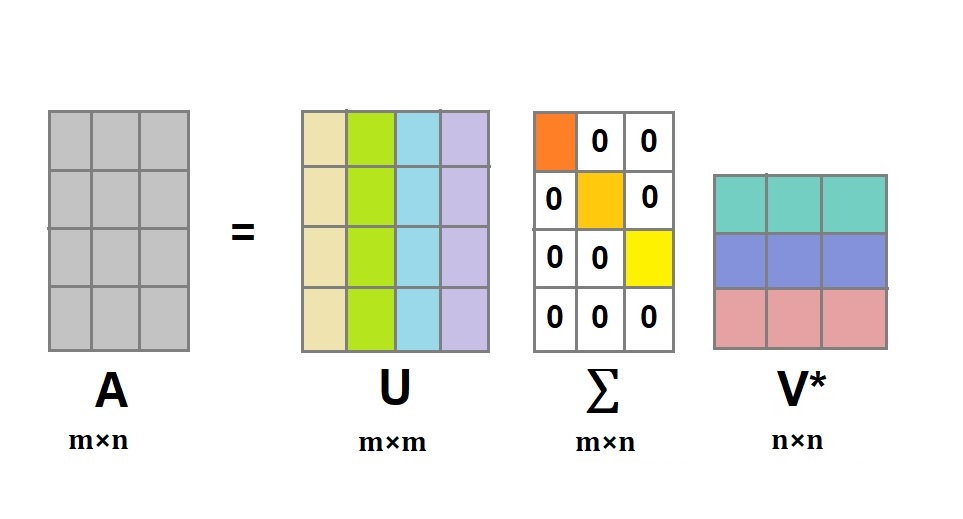Singular Value Decomposition (SVD) is one of the widely used methods for dimensionality reduction. SVD decomposes a matrix into three other matrices.
If we see matrices as something that causes a linear transformation in the space then with Singular Value Decomposition we decompose a single transformation in three movements.
in this article we’ll see different methods to implement SVD.
Singular Value Decomposition Basics
SVD factors a single matrix into matrix U, D and V* respectively.

where,
- U and V* are orthogonal matrices.
- D is a diagonal matrix of singular values.
The SVD can also be seen as the decomposition of one complex transformation in 3 simpler transformations (rotation, scaling, and rotation).
In terms of transformations
- Matrices U and V* causes rotation
- Diagonal matrix D causes scaling.
So basically it allows us to express our original matrix as a linear combination of low-rank matrices. Only the first few, singular values are large.
The terms other than the first few can be ignored without losing much information and this is why SVD is referred to as a dimensionality reduction technique.
Implementation of SVD in Python
Let’s begin with the implementation of SVD in Python. We’ll work with multiple libraries to demonstrate how the implementation will go ahead.
1. Using Numpy
Python Numpy having capabilities to implement most Linear Algebra methods offers easy implementation of SVD.
We will use numpy.linalg module which has svd class to perform SVD on a matrix.
import numpy as np
#Creating a matrix A
A = np.array([[3,4,3],[1,2,3],[4,2,1]])
#Performing SVD
U, D, VT = np.linalg.svd(A)
#Checking if we can remake the original matrix using U,D,VT
A_remake = (U @ np.diag(D) @ VT)
print(A_remake)

D is a 1D array instead of a 2D array. D is a diagonal matrix with most of the values ends up being zero, such a matrix is called a sparse matrix. to save space it is returned as a 1D array.
2. Using scikit-learn
We will use TruncatedSVD class from sklearn.decomposition module.
In TruncatedSVD we need to specify the number of components we need in our output, so instead of calculating whole decompositions we just calculate the required singular values and trim the rest.
#Importing required modules
import numpy as np
from sklearn.decomposition import TruncatedSVD
#Creating array
A = np.array([[3,4,3],[1,2,3],[4,2,1]])
#Fitting the SVD class
trun_svd = TruncatedSVD(n_components = 2)
A_transformed = svd.fit_transform(A)
#Printing the transformed matrix
print("Transformed Matrix:")
print(A_transf)

Conclusion
In this article, we saw how we can implement Singular Value Decomposition (SVD) using libraries like Numpy and scikit-learn.
Happy Learning!
